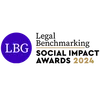Change in EPO sequence listing (ST.26) practice concerning divisional patent applications – briefing update

This briefing update concerns a positive change in practice by the EPO for applicants and attorneys who deal with biotech related patent applications with complex sequence listings. However, does this practice change go far enough?
Background to the Changes #
WIPO Standard ST.26 has been in force since 1 July 2022 requiring applicants to submit ST.26 compliant XML sequence listings with their new patent applications. For new divisional patent applications, WIPO continues to advise:
31: Do sequence listings need to be filed again when a divisional application is made?
This is a matter of national law. However taking into account the spirit of an effective transition to WIPO ST.26, it is recommended that the divisional sequence listing be filed in WIPO ST.26 format, on or after July 1, 2022, if a parent application has a sequence listing provided in WIPO ST.25 format.
As this is a decision for the Office, some may decide applicants to be allowed to “carry over” the sequence listing from the parent application to the divisional or request that applicants file a new sequence listing that is WIPO ST.26 compliant. Offices should consider their practice when carrying out their WIPO ST.26 implementation plan during 2021.
The UKIPO, following proactive user consultation, confirmed that ST.26 will not apply to divisional applications where the parent application was filed prior to 1 July 2022 (and therefore with a ST.25 sequence listing). A positive outcome for applicants and attorneys!
Our earlier article discussed the divergence in divisional application ST.26 practice at the EPO compared to other Offices.
EPO Approach to Date #
From 1 July 2022 to date, the EPO approach has been to require a ST.26 XML compliant sequence listings with any new European patent application filing, including divisional applications.
For divisional applications, particularly those with complex and lengthy sequence listings, this has caused applicants significant concern in terms of timing to facilitate the conversion of an existing ST.25 sequence listing by the divisional application deadline and can lead to potential legal uncertainty in terms of risk of added subject-matter caused during the ST.25 to ST.26 conversion.
Previously, the EPO suggested resolving these issues by either (i) filing the sequence listing in PDF format (which would incur excess pages fees), or (ii) filing with reference to the description of the parent application. In practice, neither solution was satisfactory for applicants. It is noteworthy that this additional burden in a tight time frame for divisional applications with complex sequence listings is unique to the biotech sector.
New EPO Approach – More Applicant Friendly #
After lengthy consultation by the EPO with epi, the professional body representing all European Patent Attorneys, and concerned applicants, the EPO has now issued a Notice [1] in the Official Journal dated 30th November 2023 in which the EPO has acknowledged that concerns persist about the risk of adding and/or losing subject-matter when converting sequence listings from the old ST.25 format to the new ST.26 format.
To deal with these concerns and provide a safeguard for applicants, the EPO now additionally permits:
- Applicants to file the parent application ST.25 sequence listing in PDF format as part of a divisional application. Under this new EPO approach, if the sequence listing is filed as a separate part of the description in PDF format and complies with ST.25, these pages will be excluded from the page fee calculation. [2]
- In this scenario, applicants will still be required to provide an ST.26 sequence listing subsequent to filing (with the potential for a late furnishing official EPO fee).
This new practice will apply to all divisional applications for which the page fee has not yet been paid.
This new approach will facilitate the late filing of a divisional patent application where there has been no time to convert the ST.25 sequence listing and will be helpful for applications with complex ST.25 sequence listings with real concerns about the risk of added subject-matter.
However, in reality, ST.26 sequence listings will be required relatively shortly after filing, within approximately 2-4 months. So, the pressure remains on applicants and attorneys to be proactive in how they manage new divisional application filings and ST.25 to ST.26 conversion.
The EPO has also provided a FAQ section concerning sequence listings, addressing the issue of divisional applications and other common issues encountered.
Contact your Murgitroyd attorney if this issue impacts you and you have any concerns for your new divisional patent application filings.
[1] ‘Notice from the European Patent Office dated 28 September 2023 concerning the handling of ST.25 sequence listings filed as a safeguard as part of divisional applications to which WIPO Standard ST.26 applies’ https://www.epo.org/en/legal/official-journal/2023/11/a98.html
[2] If the sequence information is reproduced in the description or in other parts of the application as filed in a manner that is not standard-compliant, e.g. as a table, the pages concerned will be taken into account in the calculation of the additional fee.




















